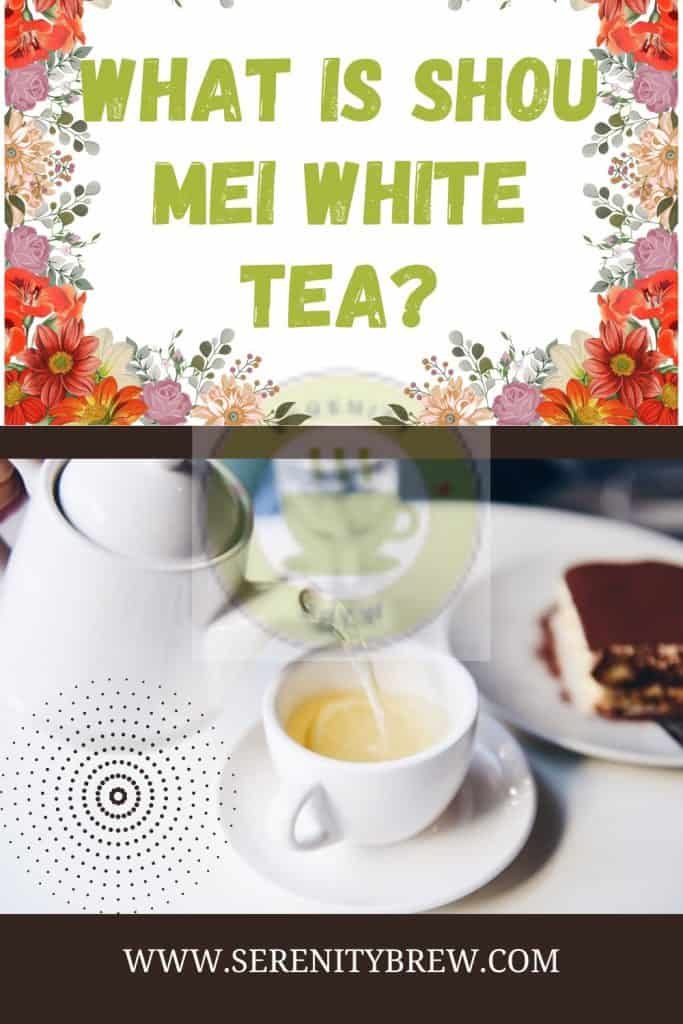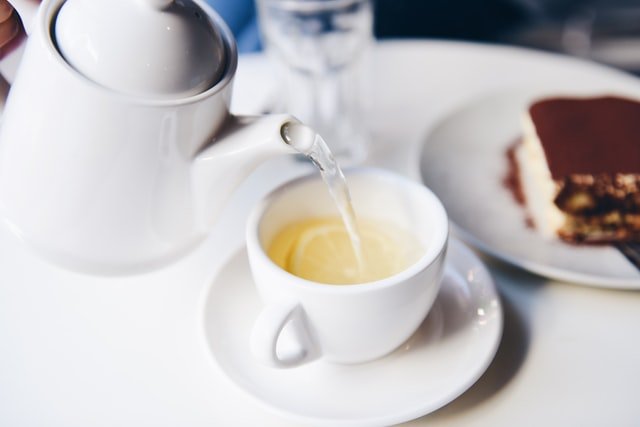
Discovering Shou Mei white tea
White tea, in general, is a delicate infusion with complex nuances, perfect to surprise the palate of tea lovers. Of course, as you can imagine, there are different varieties and, on this occasion, we will talk about Shou Mei white tea.
If you want to immerse yourself in the world of white tea, Shou Mei can be a good introduction because, unlike its brothers, it does not present a delicate and subtle liquor, but rather a more intense one with more personality.
Legend has it that two brothers from Nanking inherited a tea plantation, but they were so lazy and careless that they picked larger buds and leaves, not paying attention to what they were doing. Then, they left them in the shade and didn’t worry about them because oxidizing black tea was a lot of work; Thus, white tea was born, a slightly oxidized tea with little human intervention.
The other villagers were intrigued by this different tea that the brothers were getting and hid behind the trees to spy on the proceedings. However, all they could see was a pile of leaves drying.
White tea began to become more and more popular, so much so that production increased and all the leaves began to be used, thus giving rise to the different varieties of white tea. When a box of the fourth grade came into the hands of a palace official in Fujian, he observed the shape of the leaves and named the tea “tribute eyebrow” or Shou Mei in honor of the emperor.
What is Shou Mei white tea?
Shou Mei is a tea produced in the provinces of Fujian and Guangxi, in China. As we have already mentioned, it is a variety of white tea, specifically the fourth grade of tea; that is, a by-product obtained from the production of Bai Hao Yin Zhen tea.
It is a tea with a vegetable flavor and aroma reminiscent of cut hay, and a darker golden color than other white teas. In the mouth, it is possible to appreciate notes of baked bread as well as fruity touches that can be associated with grapes or apricot.
white tea classes
Before knowing how Shou Mei is produced, it is worth discovering the different varieties that exist within this family of tea.
Bai Hao Yin Zhen
The highest quality variety of white tea is called Bai Hao Yin Zhen. It is made from the buds of the Da Bai varietal of the tea plant, Camellia sinensis, which are harvested at the beginning of spring.
Better known as silver needles, this tea can command exorbitant prices; something easy to understand when one discovers that to produce a kilo of it, around 10,000 shoots are required, which are harvested manually.
In the cup, it is almost transparent with white hairs floating that make it shine in a unique way and on the nose, it is a very aromatic tea. Its liquor feels very delicate with hints of flowers, fruits and honey.
Bai Mu Dan
Also produced from the Da Bai varietal, it differs from it in that not only buds are harvested but also the first two leaves of the tea plant.
This combination gives potency to the Bai Mu Dan brew, making it more potent than the silver needles. In fact, the color of the liqueur is pale yellow and its flavor is balanced and prolonged, with floral nuances that can remind us of peony.
Undoubtedly, it is preferred by those bottlers who prefer stronger flavors. In addition, its price is more affordable than in the previous case.
Gong Mei
Although it is considered a category 3 tea, within the scale of 1 to 5 of Chinese quality where 1 is the best and 5 the worst, it is an infusion that is interesting on the palate.
The harvest is later than in the previous cases, in addition to also using the third and fourth leaves of the tea plant and a smaller number of shoots. The result? A strongly flavored tea that is close to oolong .
Sho Mei
Finally, we come to the tea that interests us in this article. Shou Mei is a tea similar to Gong Mei; however, it is categorized at level 4 as it is made with lower quality leaves. In other words, the leftover leaves are used after the harvest of the three varieties mentioned above.
Shou Mei white tea production
In general, Shou Mei white tea is underestimated and even considered a low quality tea when, in fact, it is a very interesting tea that can surprise the most expert teapot.
After the harvest of the first three categories of white tea, it is time to harvest the tea leaves to make Shou Mei. In general, as with the other typologies, the leaves are collected manually at night.
As expected, the largest number of shoots have already been harvested, as well as the first leaves of the plant. For this reason, Shou Mei is usually made with one shoot and four leaves. Thus, the amount of raw material harvested ends up being much higher than that of, for example, silver needles and this, of course, affects the price, which is much lower, but this does not mean that the tea can be considered of poor quality.
Once the leaves have been collected, they are allowed to wither for a very short period of time and then are dried in the open air, preferably in the shade from sunlight, to stop oxidation. In this way, white tea maintains most of the properties present in the tea plant, as well as its aroma and flavor.
Unlike green tea or black tea, there are no further steps in making Shou Mei, as the leaves are neither roasted to “kill the green” nor rolled. For this reason, their appearance is very natural and, perhaps, not as attractive as in other cases.
Choosing a Shou Mei

Shou Mei white tea is a complex tea, and as such, choosing the right one for each palate requires a bit of research and perhaps trial and error. This is because within this variety it is possible to find fresh or aged teas; loose leaf or in the form of tea bricks; and even spring harvest or fall harvest.
If you have a choice, opt for the spring harvest which tastes more refreshing. As for choosing bricks or leaves, you should consider that the bricks have a milder flavor, while the leaves have a marked vegetable aftertaste.
In conclusion, Shou Mei white tea is a gift for the palate. Far from being a low quality tea, it is an intense and complex infusion that is worth tasting.
